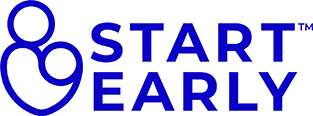Washington State pioneered a unique approach to home visiting, with a public, private partnership between the Department of Children, Youth, and Families and Start Early. Start Early is a key partner in building the statewide home visiting system. Jointly administered by DCYF and Start Early, the Home Visiting Services Account (HVSA) brings together state, federal and private dollars to support a portfolio of high-quality proven and promising programs - and make sure they deliver results.
The HVSA was established by the Washington state legislature in 2010. Since then, it has grown from funding four grantees serving 120 children to 36 grantees with the capacity to serve 2,000 children statewide.
To read about the current state of the HVSA, read our 2021 Annual Report.
The HVSA only funds a portion of all of the early childhood home visiting that happens in Washington State. To better understand the full landscape of early childhood home visiting, DCYF periodically conducts a “Home Visiting Scan” to inventory home visiting programs around the state.
In 2012, the American Indian Health Commission (AIHC) for Washington State and the Department of Early Learning (DEL) established a partnership to ensure the inclusion of culturally appropriate home visiting and other critical early learning services were included in planning the state’s developing home visiting system. This effort focused on the significant disparities experienced by AI/AN mothers and babies.
In partnership with AIHC and with funding from the federal Maternal, Infant, and Early Childhood Home Visiting grant, an update to the original 2013 report was completed in 2017.
A primary funding source of the home visiting program in Washington State is the federal Maternal, Infant Early Childhood Home Visiting Program, MIECHV. Since 2010, Washington has received several formula and competitive grants to both fund existing programs and expand the programs reach across the state.
Since 2010, Washington State has continued to expand upon its home visiting services, while focuses on the following federally recognized benchmarks:
- Improvements in maternal and prenatal health, infant health, and child health and development
- Increased school readiness.
- Reduction in the incidence of child maltreatment.
- Improved parenting related to child development outcomes.
- Improved socio-economic status.
- Greater coordination of referrals to community resources and supports.
- Reduced crime and domestic violence.
Through federal grants, Washington receives $10 million annually to support direct home visitation services in local communities, to develop systems to build quality implementation of evidence-based home visiting, to integrate home visiting as a strategy in a comprehensive statewide system for early childhood services, and to collaborate with and partner across agencies and throughout communities.
In addition, the Home Visiting Services Account has benefitted from increasing investments over the past several years, including funding from various state funding sources. These funding sources include, state Temporary Assistance for Needy Families, Dedicated Marijuana Account and the General Fund State. Each of these funding sources have a slightly different focus, enriching the opportunity to engage families across different parts of the state.
To complement the Home Visiting Scan, the Washington State Department of Health recently completed a Home Visiting Needs Assessment – a tool that estimates need for home visiting services based on various population-based community indicators of risk. Previously DOH completed a similar home visiting needs assessment in 2011. The purpose of updating this Needs Assessment from the 2011 version is not to redistribute current funds, but rather to use for future planning. We also wanted to analyze communities at a smaller scale than the county level to support planning in smaller geographic areas. As part of our ongoing federal reporting, DOH completed a 2020 update to the MIECHV Needs Assessment, updating data from the original 2010 Needs Assessment.
- 2017 HVSA Needs Assessment Final report
- 2017 HVSA Needs Assessment Methods supplement
- 2017 HVSA Needs Assessment User Guide
- 2020 MIECHV Needs Assessment
- 2020 Needs Assessment Race and Ethnicity Brief
- 2020 MIECHV Needs Assessment Executive Summary
- 2020 MIECHV Needs Assessment Data Summary
- 2020 MIECHV Needs Assessment Appendices
- School Locales Map
Recently, we were asked by the state legislature to provide an update letter on the status of the HVSA.
In addition, we were tasked by the legislature to lay out the process for a proposed expansion of home visiting across the state of Washington.
A primary funding source of the home visiting program in Washington State is the federal Maternal, Infant Early Childhood Home Visiting Program, MIECHV. Since 2010, Washington has received several formula and competitive grants to both fund existing programs and expand the programs reach across the state.
In partnership with Start Early and SRI International, we have concluded the RISE Home Visiting Evaluation. This was a three-year study that ran from fall of 2013 to fall of 2016 and was designed to include both a process and an outcome evaluation.
The process evaluation answered the primary research question: How does the Implementation HUB develop to support high-quality home visiting services in Washington?
The outcome evaluation measured the impact of the HUB on three major outcomes: use of training and TA; model fidelity and implementation quality; and program staff competency and self-efficacy.
The primary research question was: How do the identified programs in Washington that receive support from the Implementation HUB differ from comparison programs in other states with regard to the three major outcomes
During fall of 2016 to fall of 2017, a follow-up evaluation occurred to collect an additional year of outcome data for the rural substudy. The rural substudy used mixed methods to learn more about the experiences of rural programs to answer the primary research question: What are the unique features of implementing evidence-based home visiting in rural communities?
More Information:
- Rise Home Visiting Evaluation Summary
- Rise Home Visiting Final Evaluation Report
- Rise Home Visiting Administrative Brief
- Selected Findings 2015
- How are home visitors putting their skills to use
- Rural Case Study Brief Report
For questions, email Home.Visiting@dcyf.wa.gov.


